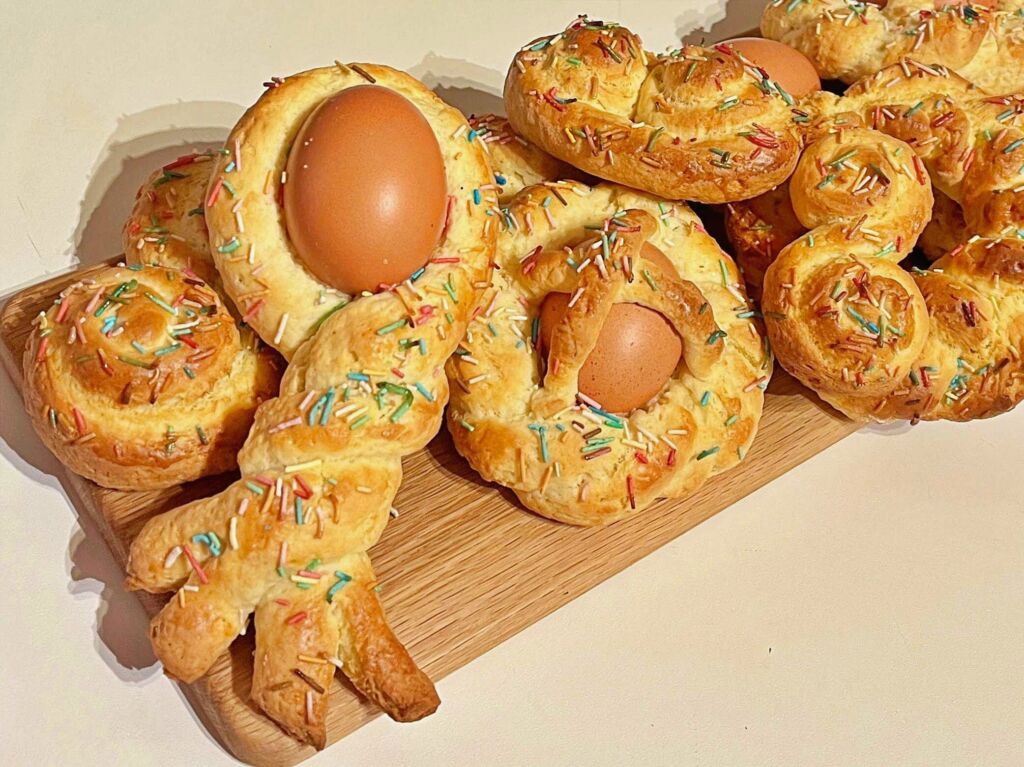
biscotti di pasqua calabresi
I love when a holiday has a special treat associated with it. In Italy, there are always beautiful sweets or breads appearing in every pasticceria at different times of the year to signify a new holiday or season. Even better, each region in the country might have their own variation or recipe. These Calabrese Easter cookies feel so festive and like they are welcoming the spring season with Italian sweetness. The dough is formed into a variety of shapes and covered in sprinkles – so fun!
Calabrese Easter cookies are a mix between a cookie and biscuit – soft, but crunchy on the outside, and gently citrus scented. They can also be flavored with brandy or other liqueurs.
These Italian easter cookies hail from Calabria, the region in Southern Italy comprising the “toe” of the country’s boot shape. However, variations can be found all over Southern Italy and Sicily. Shapes range from a bell, dove, braid or basket holding an egg. Also, there is the larger crown shape, holding multiple eggs, which makes for a beautiful centerpiece or gift.
Making these Italian cookies brings back memories of the American tradition of dying and decorating eggs for Easter. Eggs often are present in Easter and spring-time desserts because they symbolize new life and rebirth. Also, religiously, eggs symbolize the resurrection of Jesus and the tradition of using eggs as a part of Easter celebrations, including baked goods, brings good luck.
Ingredients
- Flour- type 00
- Sugar
- Leavener – lievito in polvere per dolci *see note
- Shortening
- Eggs
- Milk
- Orange zest
- Sprinkles
In Italy, baking powder is sold as lievito in polvere per dolci, “powdered yeast for desserts” and is often lightly scented with vanilla. It is also sometimes called lievito istantaneo per dolci or simply lievito per dolci and sold portioned as a bustina or “sachet” containing 16 grams. For this recipe, 1 ½ teaspoons baking powder can be substituted.
I like using shortening for these Calabrese Easter cookies because it makes for a crumbly, almost scone or biscuit-like texture. Compared to butter, shortening is lacking in water content and has a high melting point, which allows for baked goods using it to hold their shape and be thicker. These properties lend themselves well to this style of decorative cookie.
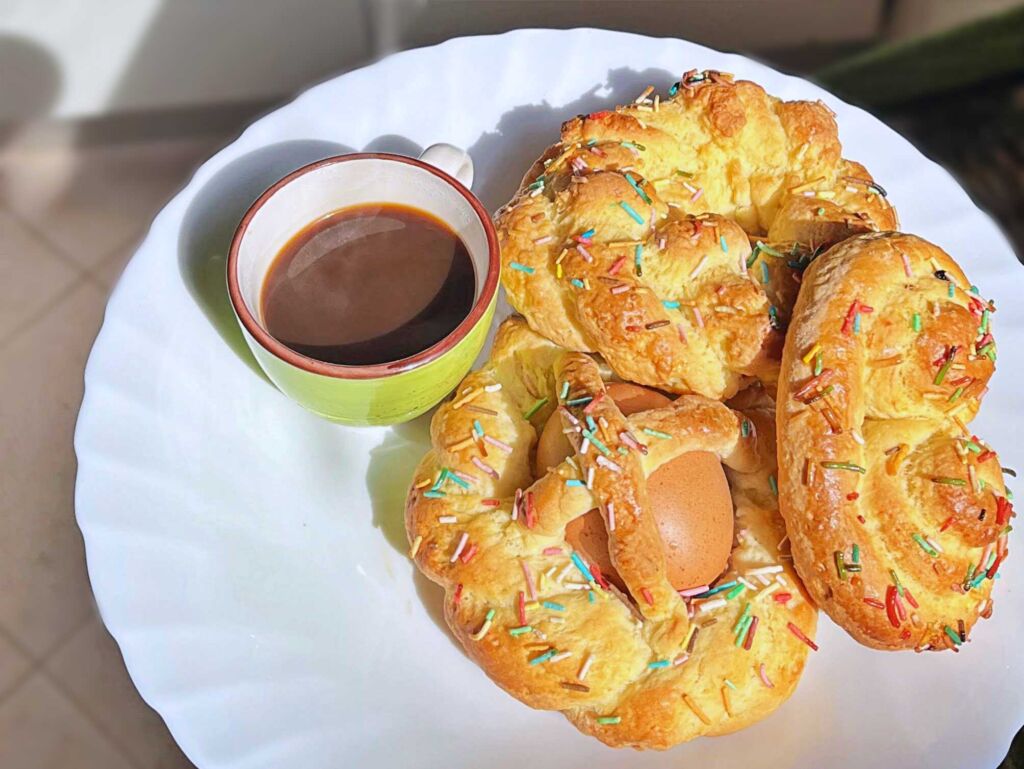
Step by Step
Let’s begin making these Calabrese Easter cookies!
Making the Dough
You can definitely make these cookies in an electric mixer, but I enjoy the personal touch of making them with my hands.
First, measure the flour, granulated sugar, and leavening agent into a large bowl. Whisk these dry ingredients until just combined.
Then add the shortening and break it up into the dry ingredients with your fingers or a fork, pressing and squishing it around until it starts to combine with the flour and ball up into little pea-sized pieces.
Push the flour mixture to the sides of the bowl, making a well in the middle. Then add the eggs, milk, and orange zest. With a fork, give them a little whisk in the middle of the well, to break up the eggs and give the mixture a start. Then begin to incorporate the surrounding flour mixture and keep mixing until a rough ball begins to form. At this point, I find it easiest to form the dough with my hands, so dump it out of the bowl onto the counter. Gently knead and work the dough for a couple minutes until a smooth dough forms.
It might feel too soft and warm to form into shapes immediately, so wrap it in plastic wrap and put in the refrigerator for about 30 minutes. You just want the dough to rest for a bit after all that exercise rolling around on the counter.
Shaping the Cookies
Now begins the fun part, forming the cookies! Lightly dust the counter with flour, but don’t add too much as it will make it difficult to roll the dough into ropes. The dough needs slight friction to roll smoothly, so it’s ok if it feels a little sticky.
Break off small pieces of dough and start rolling them into ropes about 2-3cm thick and form the shapes from there.
There are a variety of shapes we can make. This cookie dough will make about 8-10 cookies, sized just larger than an egg. You can also use this dough to make a large braided crown centerpiece, with eggs placed along the top of it.
Traditional shapes include braided nests and baskets, Long thin ropes can be rolled up into spirals or twisted into wreaths. Be creative and most of all, have fun!
Use uncooked eggs to decorate the cookies. They will bake in the oven along with the cookies. Use room temperature eggs to ensure they cook completely.
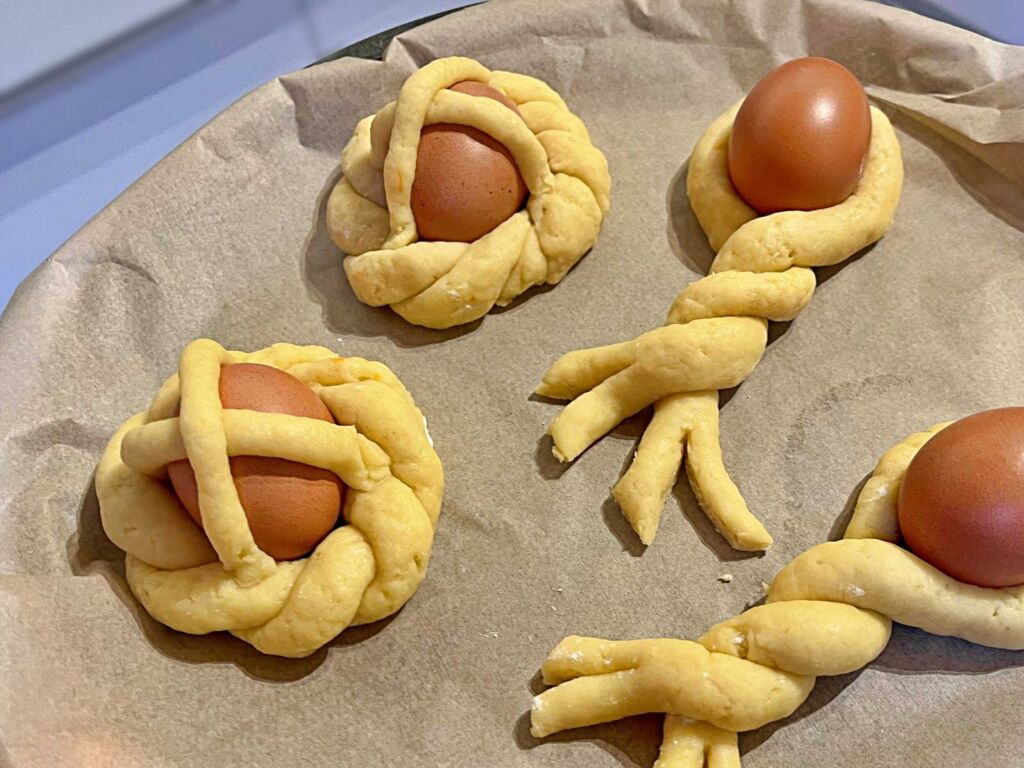
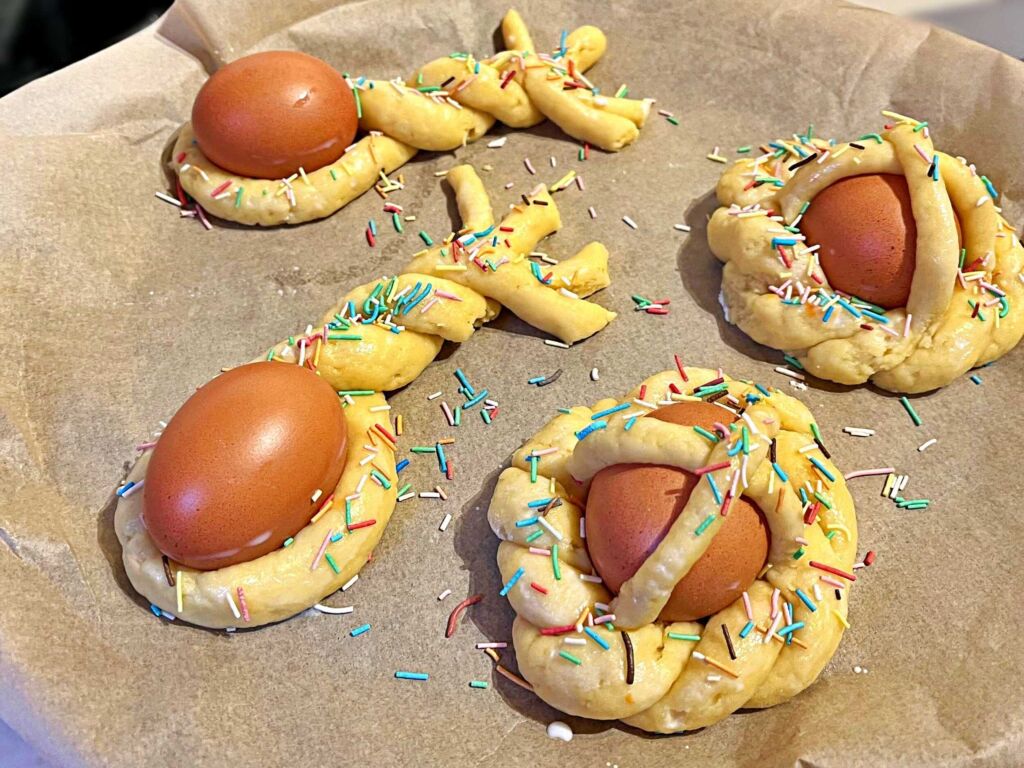
Place the cookies on a baking sheet lined with parchment paper and brush them with an egg wash made with a lightly whisked egg. You can also use a yolk mixed with a splash of water, or some milk. Any fatty liquid will give them a golden-brown sheen once baked. Lastly, the sprinkles!
Bake for about 20-30 minutes, but the time will vary based on the size of the cookies, so keep an eye on them. Take them out of the oven when they are a light golden brown.
Remove the cookies from the baking sheet and let them cool on a wire rack.
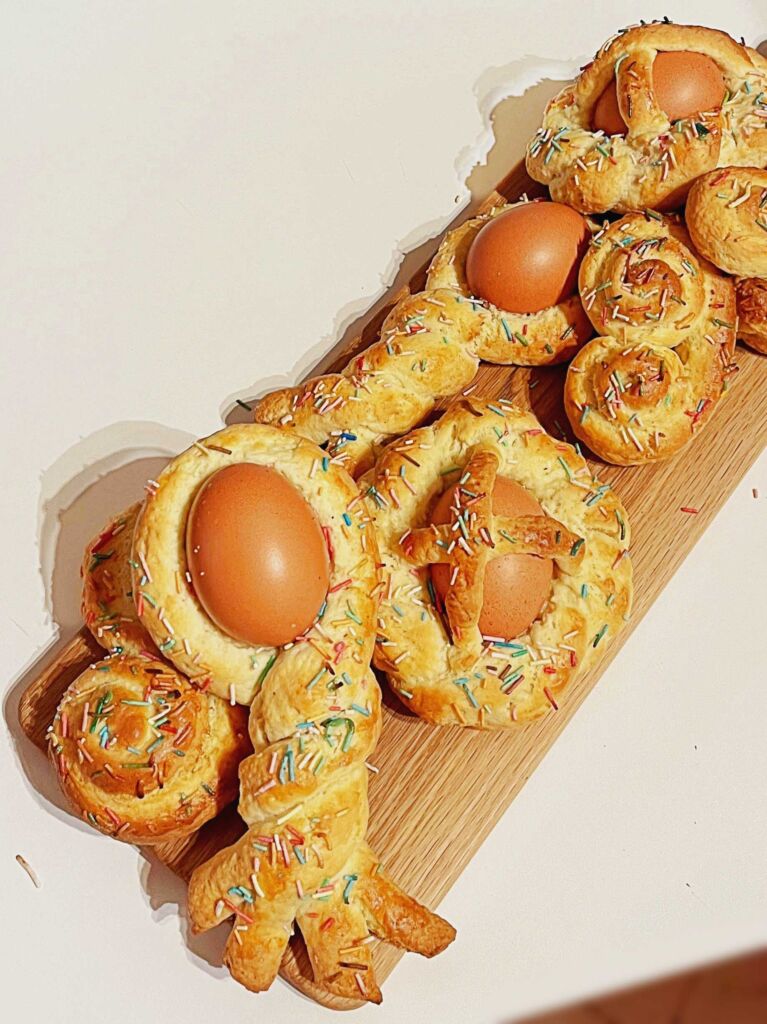
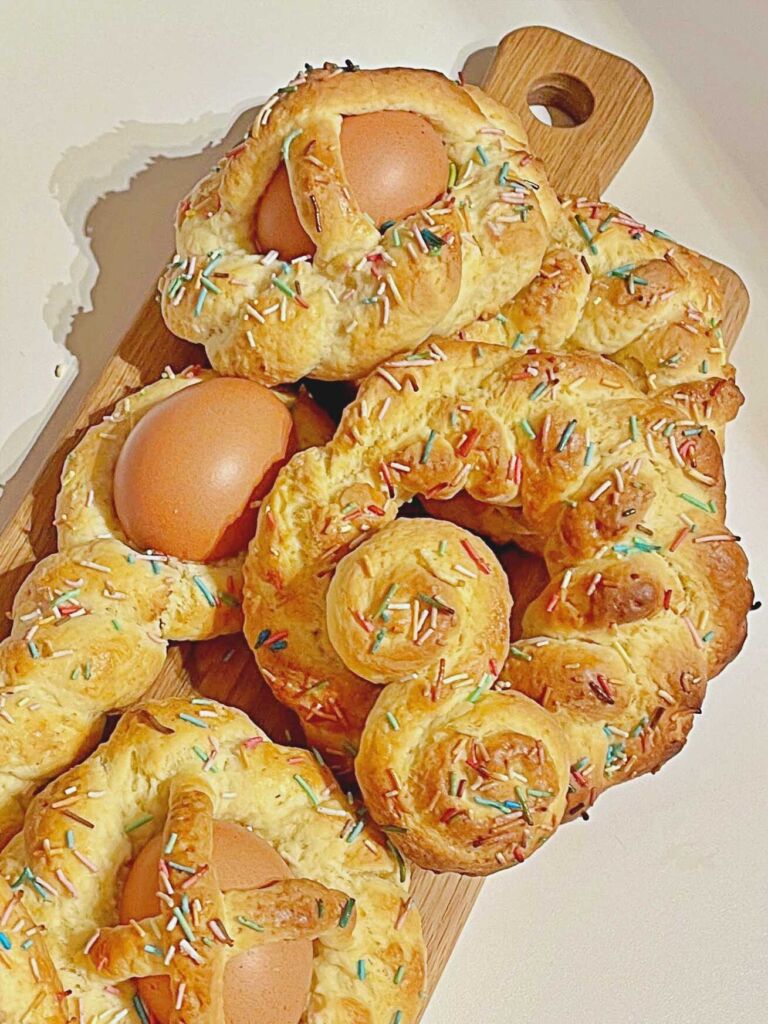
Tips and FAQs
- All-purpose flour can be substituted in an equal amount for type 00 flour
- 1 ½ tsp baking powder can be substituted for the Italian leavener
- Lemon zest can be substituted for the orange zest
- Butter can be substituted in an equal amount for the shortening. It will result in a cookie that may spread a bit more in the oven and will taste more, well, buttery.
How do I store Calabrese Easter cookies?
The cookies will keep fresh for a few days stored in an airtight container. Remove the decorative eggs and store separately in the refrigerator.
Calabrese Easter Cookies Recipe
Calabrese Easter Cookies
Course: Dolci8-10
cookies30
minutes30
minutes30
minutesIngredients
500g Type 00 flour
120g granulated sugar
16g leavener – lievito in polvere per dolci *see note
60g shortening
2 eggs
70ml whole milk
Zest of ½ an orange
- Decoration:
Eggs, uncooked
Sprinkles
Directions
- Preheat oven to 180°C
- In a large bowl add the flour, sugar, and leavener. Whisk until combined.
- Add the shortening and incorporate with a fork or fingers until broken down into pea-sized pieces.
- Make a well in the middle of the dry ingredients and add the eggs, milk, and zest. Whisk the wet ingredients together and slowly incorporate the surrounding dry ingredients. When a rough ball starts to form, dump onto counter and work with your hands until you achieve a smooth dough.
- Wrap the dough in plastic wrap and chill for 30 minutes.
- Dust the counter lightly with flour, too much will make it difficult to roll the dough. It’s ok for the dough to be a little sticky.
- Break off about golf ball size pieces of dough to start forming various shapes for the cookies. Roll into ropes 2-3cm thick. Make 3 long thin ropes to make a braid or twist 2 ropes together and wrap around an uncooked egg. Cover with 2 thinner ropes to form a basket. Continue forming other spiral or nest shapes, they can hold an egg or be left plain.
- Brush the cookies with a lightly whisked egg or milk and add sprinkles.
- Bake for between 20-30 minutes. Cooking time will vary based on the size of the cookies but are done when they are lightly golden brown.
- Remove from the baking tray and allow to cool on a wire rack. Cookies can be stored in an airtight container. Remove the eggs and store in the refrigerator.
Notes
- * 1 ½ tsp baking powder can be substituted for the Italian leavener
More Recipes
Pasta with Radicchio Cream, Speck and Walnuts
One Pot Pasta with Ricotta and Lemon
Oven Roasted Tomato and Garlic Pasta Sauce
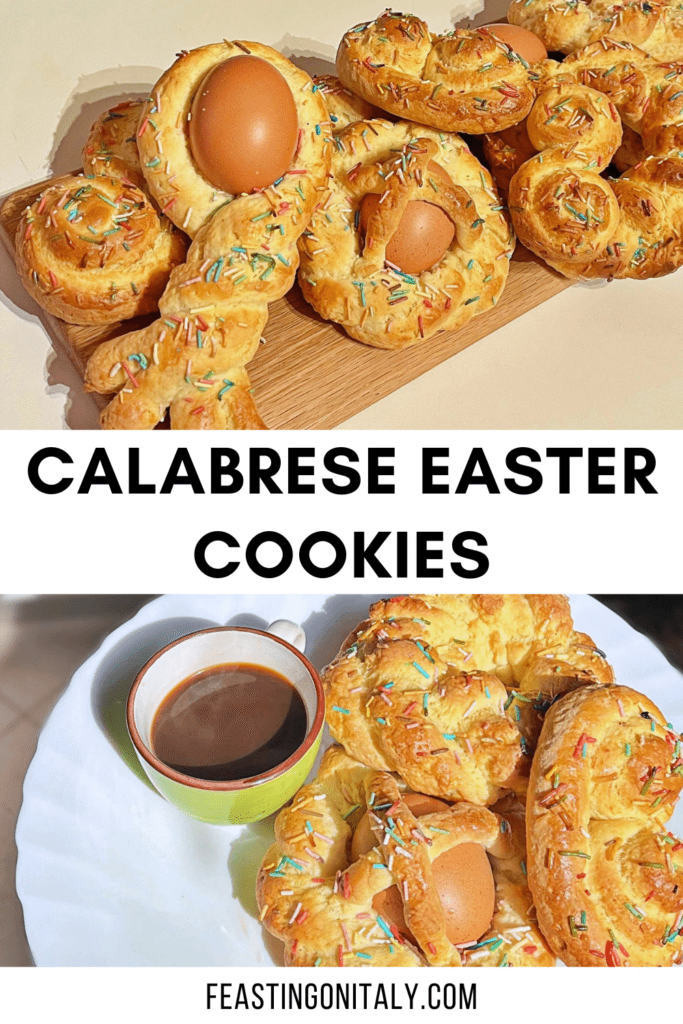
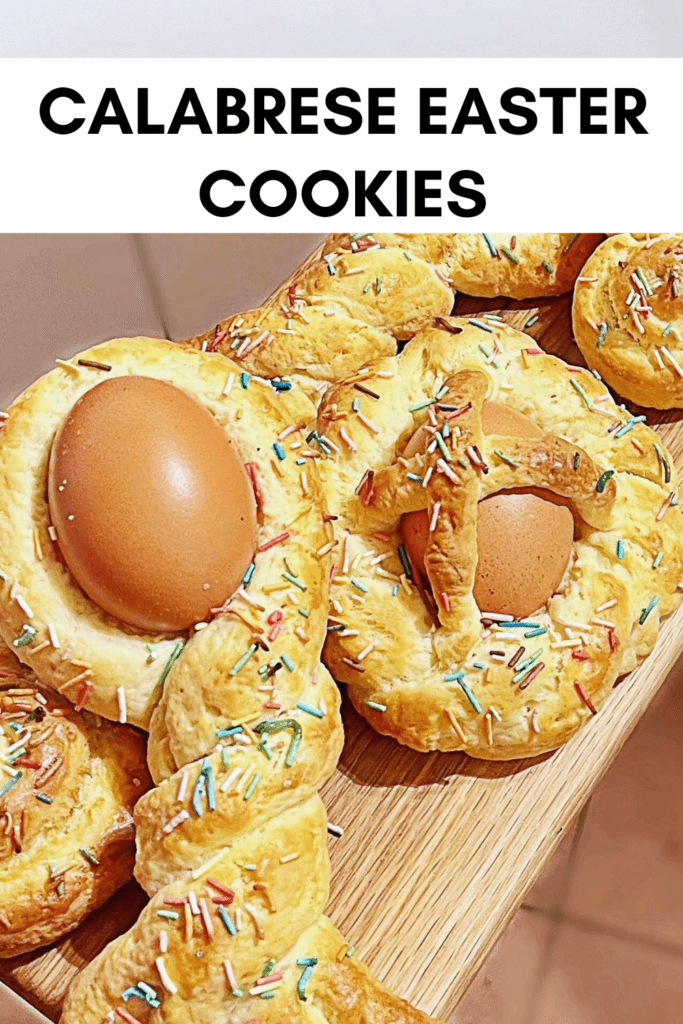

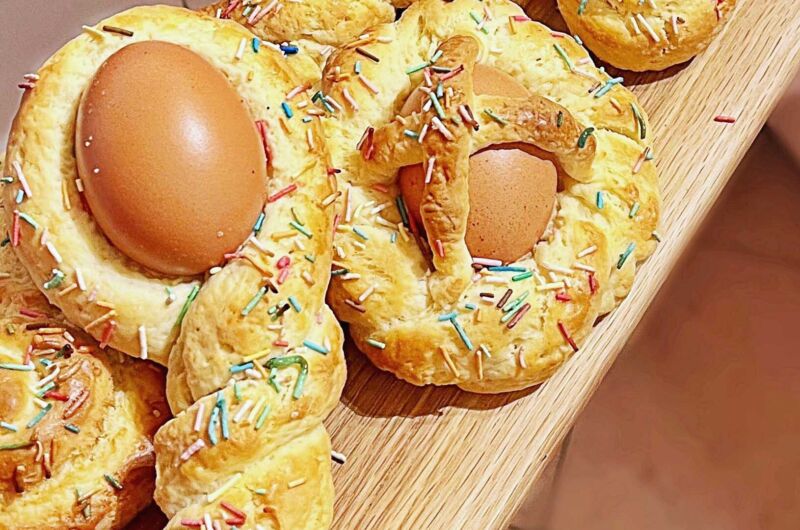

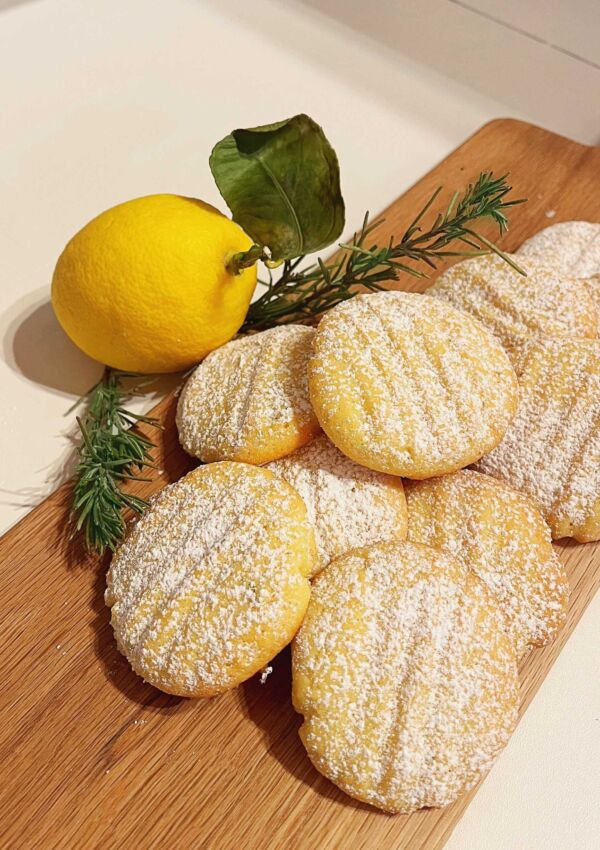
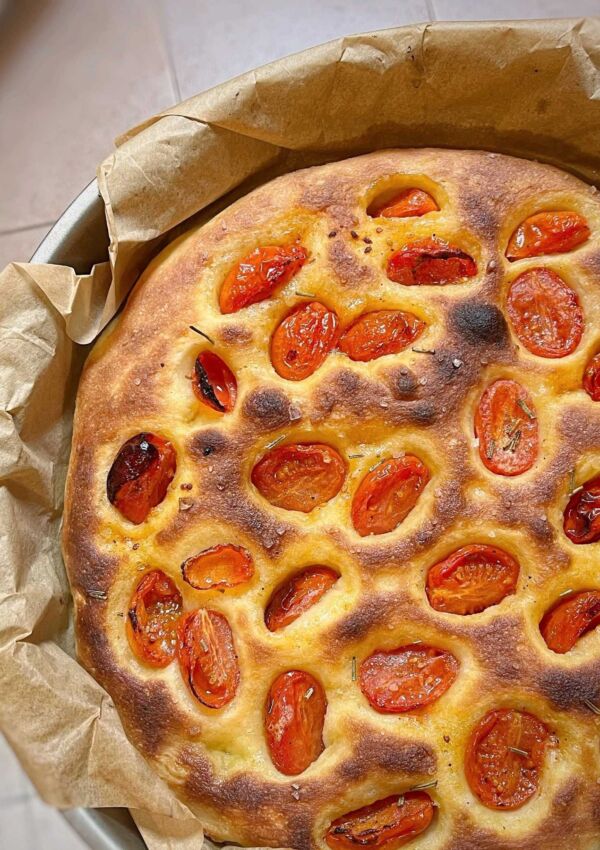
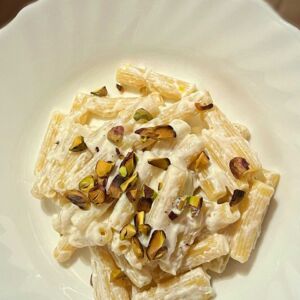
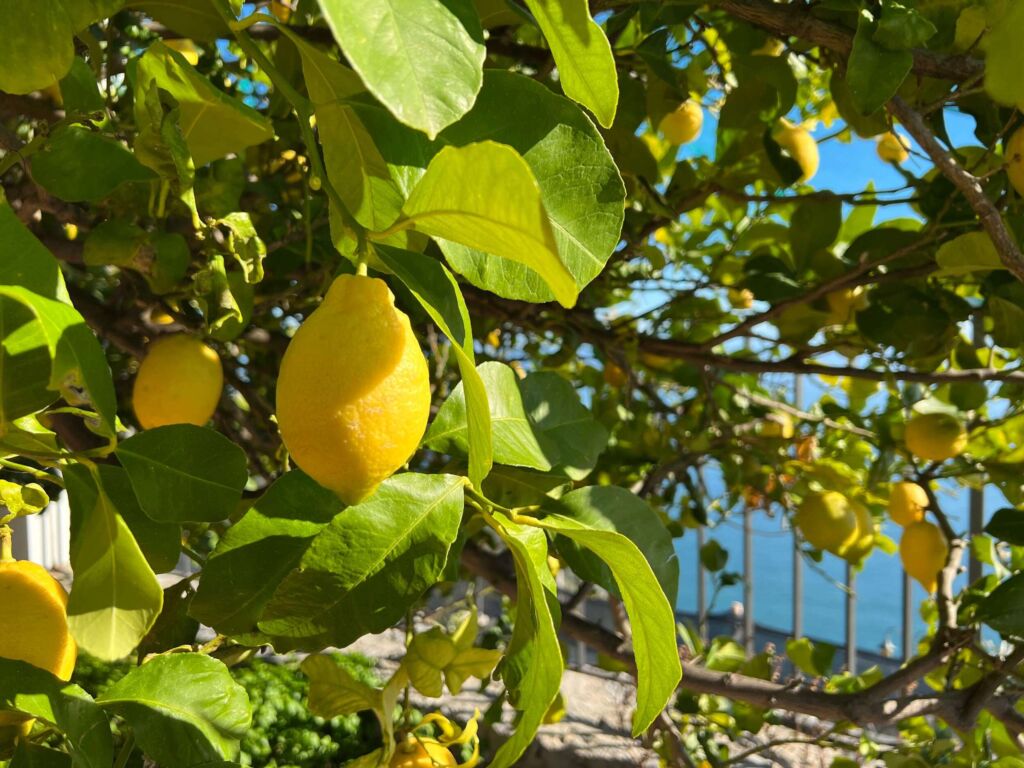
Leave a Reply
You must be logged in to post a comment.